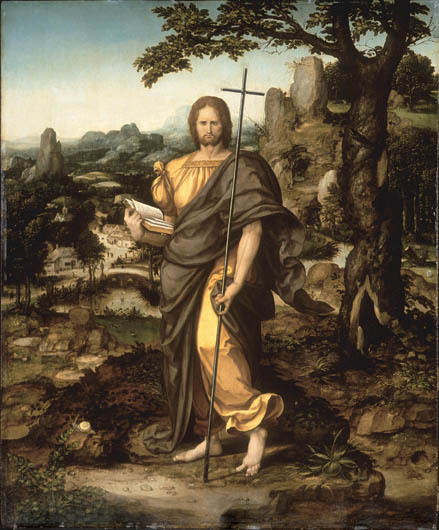When I was growing up in Crown Heights, Brooklyn, New York I had a friend named Billy Tracy. I admired his name since I was a fan of the popular comic book police detective, Dick Tracy. I treasured my Dick Tracy crystal radio kit. Then I learned that Billy's family name was not originally Tracy. It was changed from Trotsky. Although the family had no connection to the Marxist revolutionary Leon Trotsky, it seemed wise to change their name to an all-American one.
Recently, I was reminded of my friend Billy Tracy when I read about a young Indian woman, a poet and interfaith activist, who is planning to study in the United States. She thought she might be handicapped by her first name: Swastika.
In view of the word's association with Nazi genocide, Swastika Jajoo plans to use a nickname when she travels to the West. Ironically her surname, Jajoo, is pronounced ja-jew.
How did she acquire the name Swastika? Were her parents Nazi sympathizers? Not at all. The swastika is a revered ancient symbol in India, as well as in several other cultures dating to ancient times, including Egypt, Greece, China, Japan, and even among Native Americans. Descendents of these cultures mourn that the Nazis tarnished a beloved symbol by connecting it to one of the most evil genocides in history.
In an email to the Huffington Post in November 2014 the young woman said that the name Swastika is common in India. The swastika is an ancient symbol that stands for prosperity. She added: "My parents wanted a daughter with infectious goodness, enthusiasm, and love for life [...] and so they decided to give me the name Swastika."
While we can sympathize with this young woman and others in cultures that have revered the swastika, or variants of it, we must question if it should be rehabilitated, as some recent articles have asked.
An op-ed commentary in the Los Angeles Times gave a resounding no: "Hitler ruined it forever. " An article in the Atlantic said yes, with the theme, "Don't let hate win." A New York Times article was non-committal, saying "the issue is complicated."
Restating the swastika controversy, can it or should it be reclaimed, especially in light of the fact that Nazi sympathizers and other virulent anti-Semites are still using it?
To the "can" question the answer is yes. The history of the cross offers a striking example of the meaning of a symbol radically changing. The cross as a positive symbol also dates back thousands of years to many cultures in addition to Hinduism, including the ancient Egyptians and Greeks. But in Roman times it became a feared and hated symbol of crucifixion. The Romans deliberately made crucifixion the most horrible death imaginable for the express purpose of instilling fear and terror into those who might be tempted to oppose Rome. Untold numbers of Jews were crucified and later Christians were savagely punished with crucifixion for merely being Christians.
It wasn't until the fourth century that the cross first became a Christian symbol. Legend says that the night before the Eastern Roman Emperor Constantine was preparing to go to war with the Western Emperor, Maxentius, he had a vision of a cross in the sky with the words "by this symbol you will conquer." Interpreting this as prophesy, Constantine placed the cross on his military banners and shields.
After his victory, the sign of the cross began its role as a devotional religious object, eventually becoming one of the most revered symbols in Christianity. In the sixth century the crucifix--a cross with the image of Jesus on it--was sanctioned by the Church.
The cross became so closely identified with Christianity that by the late Middle Ages and Renaissance, when artworks inspired by Christianity proliferated, the original terrifying meaning was lost: The cross was anachronistically routinely pictured, and proudly displayed, in the hands of the very people who were persecuted by it (i.e. crucifixion).
Christianity was able to transform a negative symbol into one of victory and conquest--Jesus' conquest of death and Christianity's victory over Rome-- since, as historians note, the victors can not only rewrite history, they can invent new forms of it.
Now that we have established the "can," what about the "should"?
That's where the analogy between the cross and the swastika breaks down. When Christianity became the dominant European religion, the cross could no longer threaten Christians. In contrast, today's Jews continue to be a minority in Europe and elsewhere, subject to widespread prejudice and hate crimes, with the swastika often displayed in attacks on Jews and Jewish institutions.
The philosopher George Santayana famously told us that "those who cannot remember the past are condemned to repeat it." That chilling aphorism is particularly relevant for Jews, since even ancient forms of anti-Semitism are still with us-- and on the rise worldwide. Some still openly preach genocide for Jews.
To avoid falling into the trap of forgetting, Israel created the Holocaust memorial Yad Vashem in Jerusalem, which includes documentation about victims of the Holocaust and preservation of the names and memories of the six million Jews who were killed. And the USC (University of Southern California) Shoah Foundation has recorded 52,000 interviews with Holocaust survivors and other witnesses from fifty-six countries. We can only hope that the designation of International Holocaust Remembrance Day by the United Nations for January 27th of each year (the anniversary of the liberation of Auschwitz-Birkenau concentration camp) and the establishment of Holocaust museums throughout the world will also prevent Nazi atrocities from slipping into oblivion.
Yet time has a way of generating amnesia.
Four hundred years or more from now, could the narrative be changed? Could the swastika become a symbol of victory over persecution and genocide? It seems unimaginable. But perhaps someone might dare to propose a new rationale, to declare: "The ancient Egyptians, Assyrians, Babylonians, Persians, Greeks, Romans, and the Third Reich are gone. Jews are still here If Moses embarked from a plane in Tel Aviv he would be greeted in his familiar language in the Promised Land."
I wonder. But don't hold your breath, as suggested by the fate of a musical composition reported in the New York Times on March 4, 2015.
Prize winning 21-year-old Estonian-American composer Jonas Tarm's nine-minute commissioned composition "March to Oblivion" was scheduled to be performed at Carnegie Hall by the New York Youth Symphony (NYYS) on March 8, 2015 . The performance was cancelled when it was discovered that the composition includes a 45-second musical quote from the Nazi anthem the "Horst Wessel" song. Tarm was devastated by the cancellation since, as he later stated, his piece was " devoted to the victims who have suffered from cruelty and hatred of war, totalitarianism, polarizing nationalism -- in the past and today."
The lesson: Regardless of intention, anything Nazi meets fierce disapproval. That does not bode well for the rehabilitation of the swastika.
Bernard Starr, PhD, is Professor Emeritus at the City University of New York (Brooklyn College). His latest book is "Jesus, Jews, and Anti-Semitism in Art: How Renaissance Art Erased Jesus' Jewish Identity and How Today's Artists Are Restoring It." He is also organizer of the art exhibit "Putting Judaism Back in the Picture: Toward Healing the Christian/Jewish Divide."


